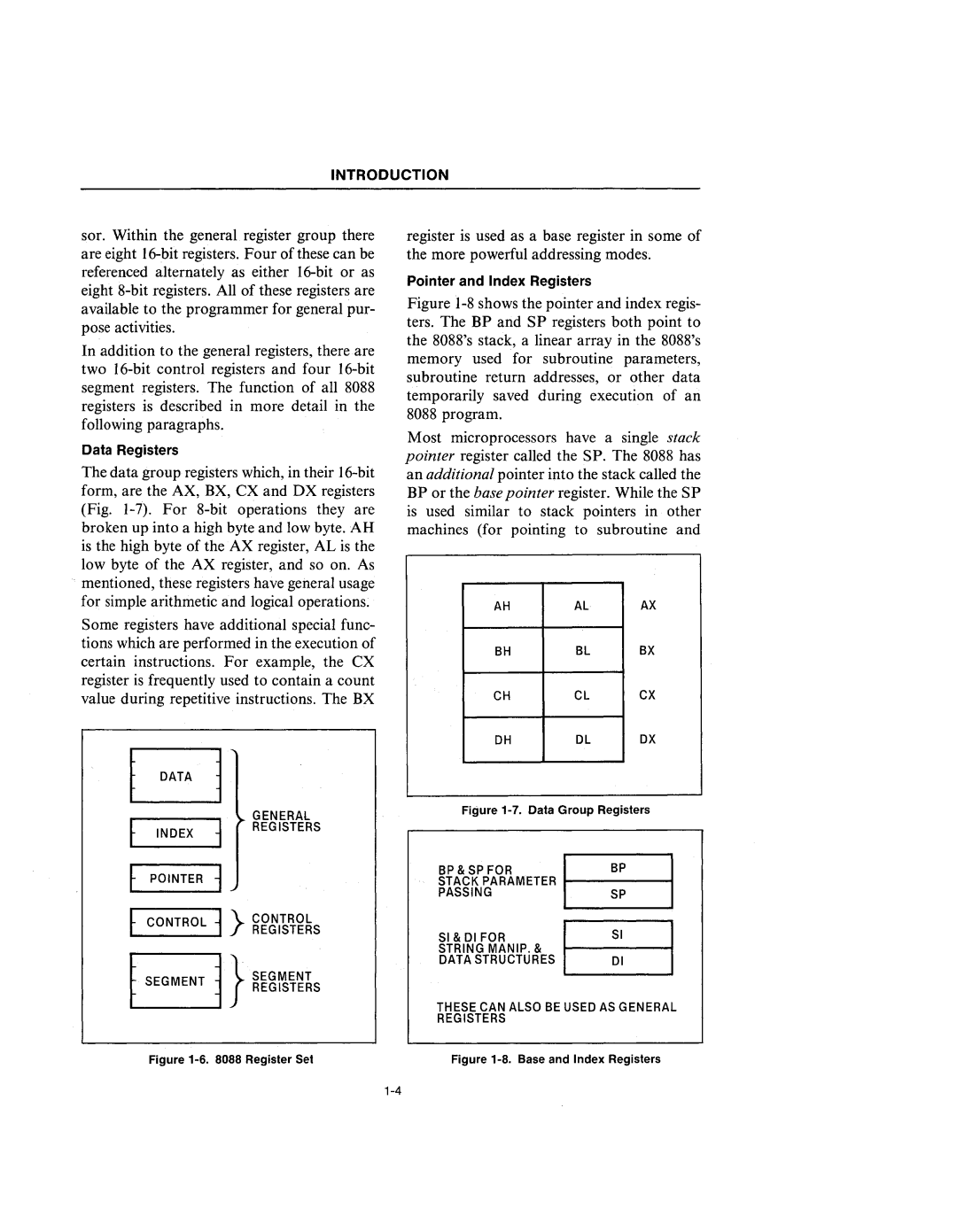
INTRODUCTION
sor. Within the general register group there are eight
In addition to the general registers, there are two
Data Registers
The data group registers which, in their
,mentioned, these registers have general usage for simple arithmetic and logical operations.
Some registers have additional special func-
tions which are performed in the execution of certain instructions. For example, the ex register is frequently used to contain a count value during repetitive instructions. The BX
register is used as a base register in some of the more powerful addressing modes.
Pointer and Index Registers
Figure 1-8 shows the pointer and index regis- ters. The BP and SP registers both point to the 8088's stack, a linear array in the 8088's memory used for subroutine parameters, subroutine return addresses, or other data temporarily saved during execution of an 8088 program.
Most microprocessors have a single stack pointer register called the SP. The 8088 has an additional pointer into the stack called the BP or the base pointer register. While the SP is used similar to stack pointers in other machines (for pointing to subroutine and
AHAL AX
BHBL BX
CHCL CX
DHDL OX
f INDEX |
|
| GENERAL | Figure | |
~ |
|
|
| ||
| REGISTERS |
|
| ||
f POINTER | ~ |
|
| BP & SP FOR |
|
|
| STACK PARAMETER ffip | |||
f CONTROL ~ } |
|
| PASSING | SP | |
| ~~~11~~ks |
|
| ||
B} |
| SI& 01 FOR | 1 | ||
|
| 'SEGMENT | STRING MANIP. & | 88 | |
|
| DATA STRUCTURES | 01 | ||
SEGMENT |
|
|
| ||
|
| REGISTERS |
|
| |
|
|
|
| THESE CAN ALSO BE USED AS GENERAL | |
|
|
|
| REGISTERS |
|
Figure | Figure | ||||
